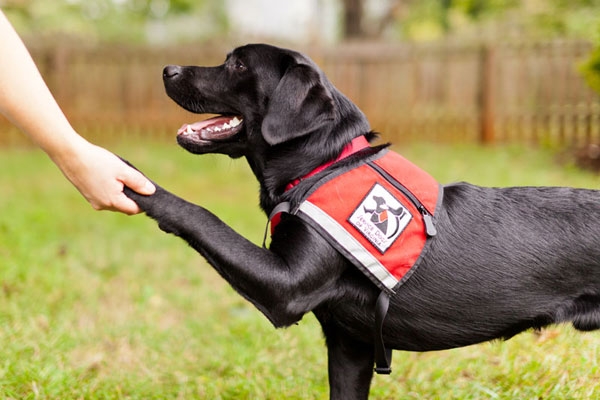You might have heard recent complaints in the news or from irritated employees and customers about the overwhelming rise of Emotional Support Animals (ESAs) appearing on planes, in business establishments, in apartments and more. However, the general consensus of what an ESA actually is has eluded many.
According to many disgruntled members of the public, ESAs are either “fake service dogs,” pets whose owners got a phony letter from a medical professional so they could take their animal anywhere or simply a loophole used by people with a minor disability so they can get a service dog without the extensive training or high price tag. Those complaints all sound very similar and seem to revolve around a common theme that perpetuates disability stigma—that the disabled person is just faking it.
To clarify, service animals—which currently can only be dogs—are, according to the Americans with Disabilities Act (ADA), “[dogs] that [are] individually trained to do work or perform tasks for the benefit of an individual with a disability, including a physical, sensory, psychiatric, intellectual or other mental disability.”
Service dogs are considered working service animals under the ADA because of their specific training, registration and the amount of money it costs for a disabled person to get one. They are not limited to seeing-eye or hearing dogs; many are trained to detect and aid a person during a seizure, panic attack, stroke, heart attack or self-harm and/or depressive and dissociative episodes. These dogs are working dogs, not pets. As such, you should never go and disrupt a service dog while it is working or pet it without its handler’s permission because it could keep it from doing its job properly.
However, ESAs are not normal pets either. Unlike service animals, they do not solely have to be dogs, nor do they need specific training in order to be registered ESAs. They do, however, have to have a letter from a psychiatrist stating why they are necessary (though they are not required to reveal your diagnosis, since that violates the ADA in terms of medical privacy).
ESAs provide relief to disabled people simply with their presence. As many people are aware, pets are scientifically proven (most significantly cats and dogs) to reduce stress levels, blood pressure and extend a person’s life. Thus, for disabled people, like those with chronic pain, depression, anxiety, panic attacks and many more conditions, it’s understandable why they would be wanted, even necessary. They are easy to get, and if you already have a diagnosed disability, it is a good, less costly alternative to a service dog.
The main problem people seem to have with ESAs is that these animals can be disruptive to the environment or people that they’re around. This mindset seems to stem from a few outlier cases rumored to be connected to an online site that offers free psychiatric diagnoses and registration for ESAs, which isn’t very credible. But this could simply be remedied through actually looking at the person’s letter from their psychiatrist (which is an actual required procedure when confirming ESAs that some people seem to overlook), and if it has the name of a website as certification, it’s clearly a ruse.
As far as animals being disorderly and disruptive, any owner of an animal—ESA or not—should make sure their animal is well-behaved before bringing them out in public. Whether this should be a mandated requirement or not, I can’t say, but I do feel that businesses should have the ability to ask a patron to leave if they have a disruptive ESA and refuse to do anything about it.
As a physically and mentally disabled student whose issues are too many to count, I have had animals since before I was born. There is not a time, aside from a six month period when I was six years old between my older dog’s death and our adoption of another dog, that I can remember not having pets around. At home, my family currently has two dogs and three cats, and it is only once I came to college that it really hit me how integral they were to my daily life. My pets always knew when I was having a panic attack or a depressive episode and just having them close by made my day significantly better. It’s been difficult not having my cat curled up next to me at night—the time of day I feel the most depressed—purring, warm and reminding me that this too shall pass.
While I do not think that I personally would want to get an ESA at this point in time (I’m too concerned with the welfare of the animal and would not want to subject it to life in a dorm where I am frequently away at class or other places), I think they are a good idea and I advocate for the possession of them by students or other people with disabilities.
So, before you go decrying someone for their “fake service dog,” take a step back and realize that you have no idea what this person’s disabilities might be, and as long as their ESA isn’t causing a disturbance or harm, they do not affect your life










